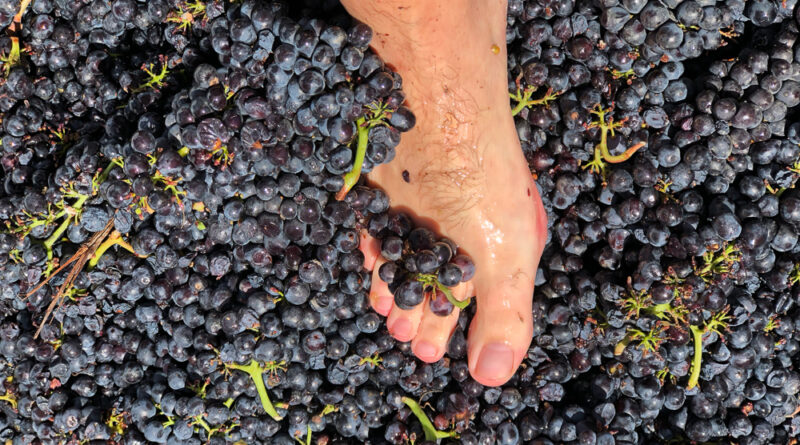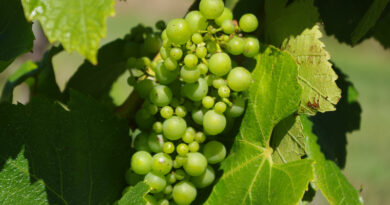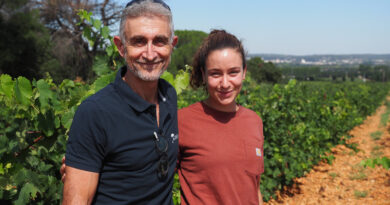Whole bunches, clusters and stems in red winemaking: an introduction
The main difference between red and white wine making is that fermentation for reds almost always takes place in the presence of the skins, whereas for whites the juice is extracted from the berries before fermentation. Rosé is usually made by taking red grapes, leaving the juice in contact with the skins for just long enough to get the right colour, and then pressing and fermenting the pink juice. [Of course, with wine there are always extra layers of complexity, but this will do for now.]
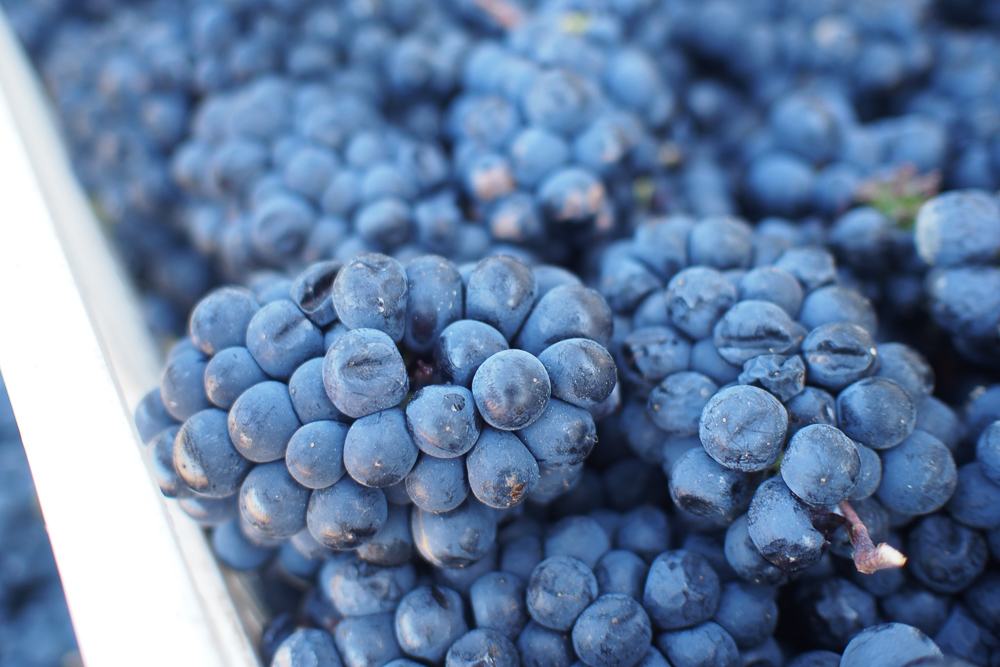
With red winemaking, there’s an interesting choice that has to be made. Assuming the grapes are hand picked, they will enter the winery as bunches of grapes. Now it’s decision time for the winemaker. How are the skins and juice going to be mixed during fermentation?
In most cases the first destination for the grapes will be a machine called a crusher destemmer. This separates the grape berries from the stems of the bunches, and then runs them through a device that then crushes them a bit. The result is a mass of pulp, skins and juice that is allowed to ferment.
In some cases, the crusher is turned off, resulting in more-or-less intact destemmed berries that can then be fermented together with a bit of juice. But the other choice is to ferment the intact bunches, which is called whole cluster or whole bunch fermentation.
This is a stylistic choice, and it’s also where our story begins to get quite detailed and quite complicated. But hold on for the ride, because it’s a very interesting journey.
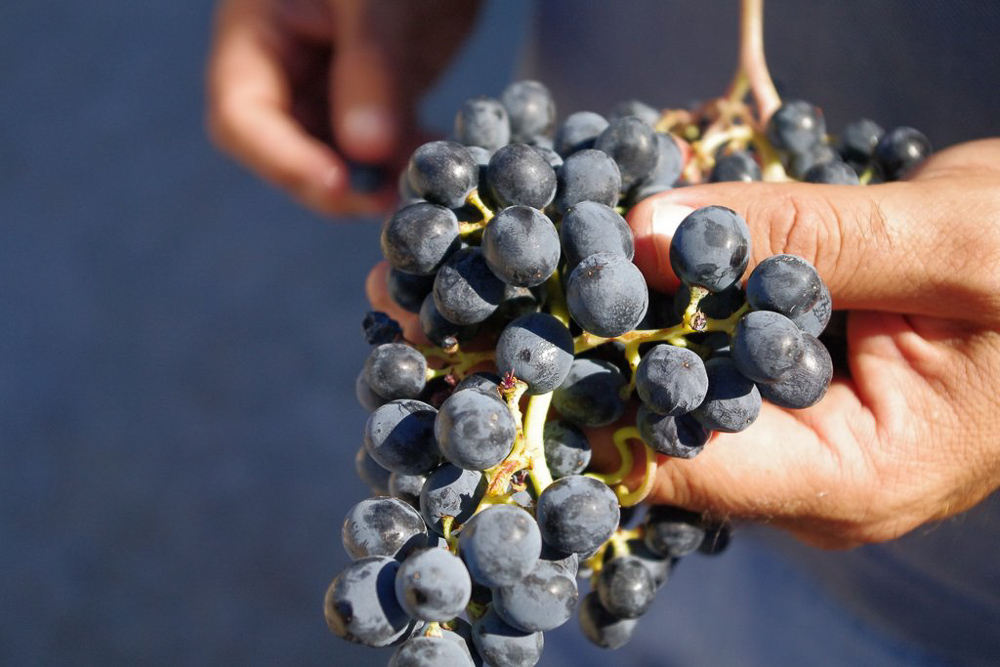
What is in a bunch of grapes? First, the grapes, but they have to be attached to something, and this connecting material is what we refer to as the ‘stems’. The main axis of the cluster is called the rachis, and then there’s the pedicel, which attaches the berries to the rachis. Finally, there is the peduncle, the part that attaches the cluster to the vine, and which is cut through to release the bunch at picking. Together all this material represents 2–5% of the weight of the cluster.
Stems start out as green, and like other green parts of plants they carry out photosynthesis. But then as the season progresses, they go through the process of lignification. This is where a substance called lignin becomes deposited in spaces in the cell walls. Effectively, the stems are turning into wood. This is an important detail, because depending on the climate of the vineyard and the conditions of the growing season, the stems can differ quite a bit, and can range from bright green to brown. And there’s quite a bit of debate about the sorts of stems that are appropriate for doing a whole cluster fermentation with.
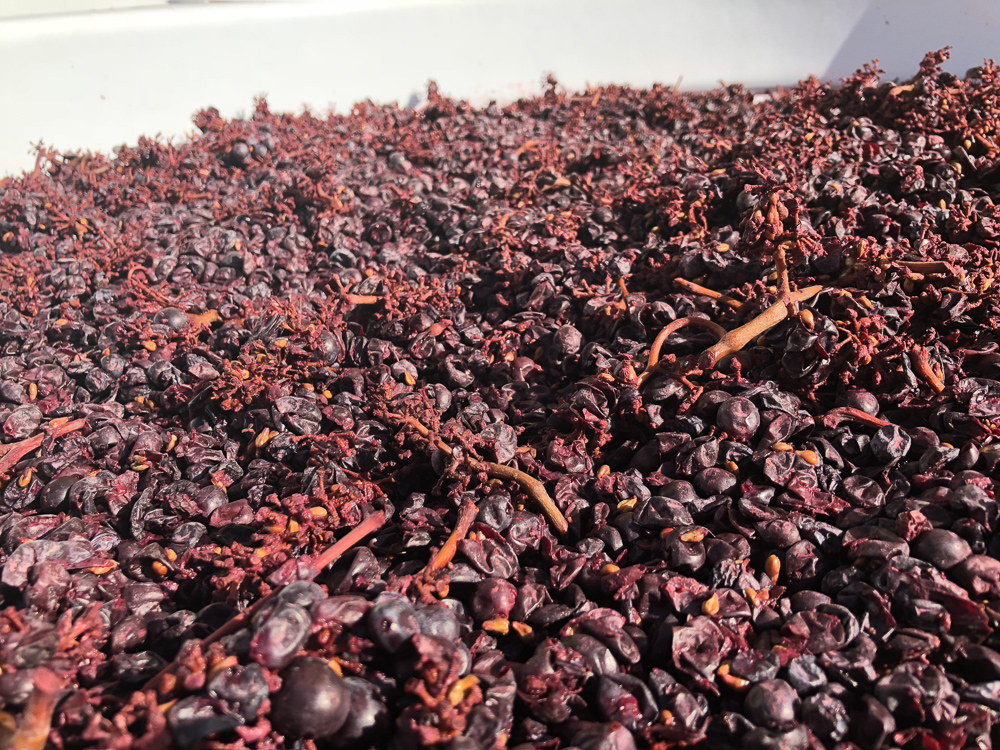
There are two key aspects to whole bunch fermentations. The first is that some or all of the berries remain intact, and where berries are intact there is a degree of what is known as carbonic maceration – more on this later. The second is that the stems are present in the ferment, and these have both direct and indirect effects on the process. The direct effect is that they can contribute flavour to the wine directly, and this is why the condition of the stems that I mentioned above is seen as so important, as is the way the fermentation is handled physically. The indirect effect is that having stems present in the ferment changes the dynamics of fermentation and pressing once fermentation has finished. The ferments seem to go more smoothly, and don’t hit such high temperatures.
What flavour impact do stems have? They add a bit of tannin, which makes the wine more structured. They also seem to make wines a bit more aromatic and floral (but this could also be coming from the carbonic maceration element of whole bunch). They make wines taste a bit fresher, even though they can reduce the level of acidity. This is because they contain potassium, which binds with some of the acid and removes it. Then they add green flavours, too, and in some cases too much green flavour to the point that the wine can taste quite herbal.
Winemakers I have spoken to say that whether or not they use whole bunches often revolves around the site characteristics of the vineyard. Some plots seem to work with whole bunches while for other plots it is a disaster. Winemakers sometimes taste the stems and then use this to make a decision: if they taste like broccoli or they are overly astringent, they avoid using them.
One controversy is whether green stems contribute greenness to wines. Some winemakers avoid them, and look for the brown, lignified stems. Others say that by the time the stems are lignified the grapes will be over-ripe. It all depends on the region. A lot depends on how the fermentation is managed. Normally in red winemaking the cap of grape skins that forms at the top of the fermenter is plunged down, or juice is pumped over it to keep it wet. For whole cluster ferments it’s very hard to punch down the cap, and to do it would take a lot of force that might release green flavours from the stems into the wine. So maybe green stems aren’t to be feared if they are handled gently?
So now it’s time to address carbonic maceration. This is quite complicated because there are lots of variations on the theme. The purest, most extreme form is when whole bunches are placed in a vat, taking care not to break any berries and release any juice. Then the vat is filled with carbon dioxide and sealed. Inside the berries, various enzymatic reactions take place, creating a little bit of alcohol, using up a sort of acid called malic acid, extracting colour but not tannin from the skins which then stains the flesh, and creating a number of aromatic molecules. After perhaps 10 days, these whole clusters are either foot trodden or pressed to release juice and then alcoholic fermentation by yeasts takes place on the skins, or else they are pressed and fermentation takes place in the absence of the skins. The result is an aromatic, light, fruity red wine with lots of appeal.
But there are variations on this theme. It’s common to fill a tank with whole clusters and then the weight of the grapes on top releases juice from the grapes below. This juice is fermented by the yeasts, producing carbon dioxide that excludes oxygen from the whole clusters above which undergo carbonic maceration. And in some cases winemakers will fill a fermenter with whole bunches and then foot tread it to release some juice, remove any air pockets, and then let a semi-carbonic fermentation finish.
It’s also common to use a mix of whole bunches and destemmed fruit in a fermenter. The whole bunches often go in first, and then destemmed fruit on top. But sometimes people do it the other way round, or mix layers like a sort of vinous lasagne. Even when there’s a mixing like this, some of the berries on the whole bunches are still intact when it comes to pressing, and will release a bit of sugar that keeps fermentation ticking along, which can help add interesting texture to the wines.
Whole bunch fermentation is becoming more popular, after a period where destemming was in the ascendancy. Now that destemmers and even machine harvesters can do the job of removing berries more accurately and gently, it’s possible to have whole berry fermentation with some carbonic elements even without stems.
Pinot Noir is the most popular variety for whole bunch fermentation, but it is becoming common for Syrah too. It’s relatively rare for the Bordeaux varieties Cabernet Sauvignon, Cabernet Franc and Merlot because these already have some green notes as part of their flavour profile.
See also:

